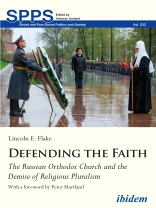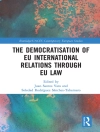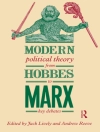Freedom of religious expression and assembly has never been under greater threat in post-Soviet Russia. The infamous Yarovaya Law of 2016 has made good on previous legislative endeavors to curtail the activities of undesirable religious entities. Behind the curtain, the influence of the Russian Orthodox Church looms large over state policy and the decline in religious liberties and pluralism.
Lincoln E. Flake explains the church’s hostility to nontraditional groups as a consequence of historical-structural factors arising from its Soviet experience and immediate-strategic factors arising from its experience in the post-Soviet religious free market.
It was not until the 2014 annexation of Crimea that church-state interests coincided to produce unprecedented collusion. The Church, which had previously only served symbolic purposes for domestic political advantage, was now required for more meaningful ‘active measures’ in Russia’s all-of-government approach to advancing its national security strategy. Reciprocation produced the Yarovaya Law and further quid pro quos account for the relapse into religious intolerance.
This study contextualizes the church’s present-day posture on religious pluralism by appealing both to historical experience and insights that Rational Choice Theory offers to the study of religious actors and religious behavior.
Sobre el autor
Dr. Lincoln E. Flake studied international relations in Provo, Utah, Cambridge, England, and St. Andrews, Scotland. He was previously on the Adjunct Research Faculty of the Center for Strategic Intelligence Research at the US National Intelligence University in Washington, DC. He has served for 15 years with the US Department of Defense, including seven years with NATO. He is an editor for the Journal of Slavic Military Studies and contributed to, among other outlets, Oxford Analytica.
The author of the foreword:
Dr. Peter Martland is a former Lecturer in History at the University of Cambridge, UK.












